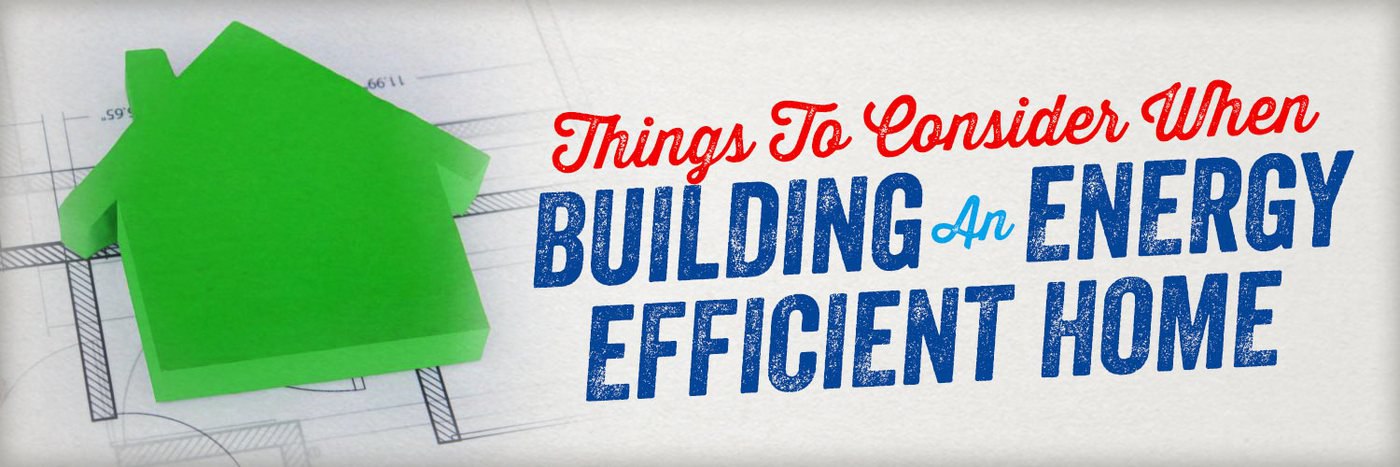What to Consider When Building an Energy-Efficient Home


Before you start designing the house of your dreams, you should consider ensuring your new home is energy efficient.
Building an energy-efficient home won’t just save you energy usage but also money in the long run. Before you start building your home is the best time to decide exactly how efficient you want the new house to be.
RetroFoam of Michigan has more than 20 years of experience using foam insulation to help homeowners make their new and existing homes energy-efficient.
We’ll talk more about air sealing with foam in a bit, so let’s get into the nitty-gritty of designing an energy-efficient home.
Designing an Energy-Efficient Home
When planning your new home, the best way to maximize energy efficiency is by taking a whole-house approach, as recommended by the U.S. Department of Energy.
This method involves looking at every aspect of your home's design and construction that impacts energy use.
This means working with your contractor and building professionals to consider factors like the climate zone and specific conditions of your building site. But it doesn't stop there. The DOE suggests also looking at:
- Energy Star-rated appliances and home electronics
- Insulation and air sealing
- Lighting and use of natural daylighting
- Space heating in the winter and cooling in the summer
- Water heating
- Windows, doors, and skylights
To help gauge your home's efficiency and identify areas for improvement, the DOE's Better Buildings division offers a Home Energy Score. This score provides a clear picture of your home's performance and where you can make changes to save energy and money.
Other Things to Consider for Building an Energy-Efficient House
The items listed above are just some of the major things to consider when looking for a whole-house system regarding energy efficiency.
The Department of Energy has several suggestions for building an energy-efficient home. So, let’s take a look at some of those and other proven suggestions.
Ultra-Efficient Homes
An Ultra-efficient home integrates state-of-the-art energy-efficient construction, appliances, and lighting with commercially renewable energy systems.
These systems include solar water heating and solar electricity.
Depending on the climate zone and terrain, the architect can incorporate passive solar heating and cooling and energy-efficient landscaping plans.
Advanced House Framing
Advanced house framing can reduce lumber use and waste when you're building a new home.
This framing also improves energy efficiency in a wood-framed house, according to the DOE.
Cool Roofs
Using highly reflective materials to reflect more light and absorb less heat from sunlight creates a cool roof.
This method helps to keep homes cooler during hot weather.
A cool roof is a great thing to have in addition to an adequate air seal.
Foam insulation on the attic's roof deck can also help keep the house cool in the summer and warm in the winter. Spray foam insulation creates an air barrier while providing thermal resistance. This means the air you pay to heat or cool stays inside, and outdoor air stays out.
Foam insulation creates the air seal the DOE recommends for energy efficiency. Traditional insulation, like cellulose and fiberglass, still allows air to pass through it, which can lead to your furnace or air conditioner working overtime to keep your new home comfortable.
Energy-Efficient New Build Home Insulation
We’ve outlined what you should consider when designing your energy-efficient new home and what other methods can help you achieve your plans.
As stated above, foam insulation is the best option for creating an air seal in your home.
When you’re ready to talk about insulation for your new home build, call us at 866-900-3626 to schedule a free estimate or fill out the form on our website.
In the meantime, head on over to our Learning Center to get the complete picture of how foam insulation can help you achieve your energy efficiency dreams.
Related Articles
What is Home Performance with Energy Star?
How Much Money Will Foam Insulation Save on Monthly Energy Bills?
About Amanda Ringler
Amanda previously has worked as a breaking news and crime reporter, TV news producer, and editor in Flint and Detroit. Throughout her career as a journalist, she has won several awards from The Society of Professional Journalists - Detroit Chapter and the Michigan Press Association. As part of the RetroFoam of Michigan family, Amanda uses her experience as a journalist to write content that will help educate homeowners on the benefits of foam insulation. When Amanda isn’t writing, she’s spending time with her husband and rescued huskies. She also loves knitting, making art, cooking, and hosting dinner and a movie night for friends and family.

.jpg)
